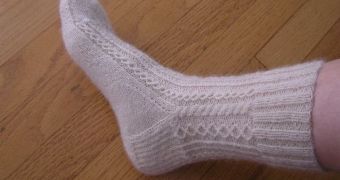Officials with the US National Science Foundation (NSF) have recently awarded a $400,000 (€292,200) CAREER Grant to a researcher at the Michigan State University (MSU), for creating a series of new sensors capable of discovering heightened risks of infections in wearers.
These sensors will be able to rest comfortably inside clothes such as socks, pants and body shirts, and will discover any potential infections before it gets a chance to set in properly. This will in turn allow people to seek medical help earlier on, therefore reducing the severity of their symptoms.
This innovation will come in handy during fall and winter months, when the incidence of conditions such as the flu and the common cold go through the roof. In addition to keeping you warm, your clothes will also be able to protect your health by announcing you when an infection has occurred.
MSU scientist Peter Lillehoj, the recipient of the 5-year CAREER grant, is the brains behind the new wearable sensors. The expert holds an appointment as an assistant professor of mechanical engineering.
According to Lillehoj, current wearable sensor technologies are fairly limited, in the sense that they can only be used to keep track of physiological parameters, including heart and respiratory rates, as well as blood pressure. The expert wants to develop more advanced devices, capable of finer precision levels.
“This technology will lead to lightweight and unobtrusive sensing systems that can be directly integrated onto fabrics and garments,” he explains. “Little has been done to create wearable sensors for biomolecular detection,” Lillehoj goes on to say.
“This research is aimed at developing wearable sensing systems that can detect biomarkers in secreted body fluids, such as sweat or urine,” the investigator says. Interestingly, Lillehoj is also working on developing so-called textile batteries.
These devices are activated when they come in contact with bodily fluids. Though small, the amounts of electricity produced in this manner may be sufficient to power up the sewn-in sensors, thus reducing their weight even further – by eliminating the need for external batteries.

 14 DAY TRIAL //
14 DAY TRIAL //